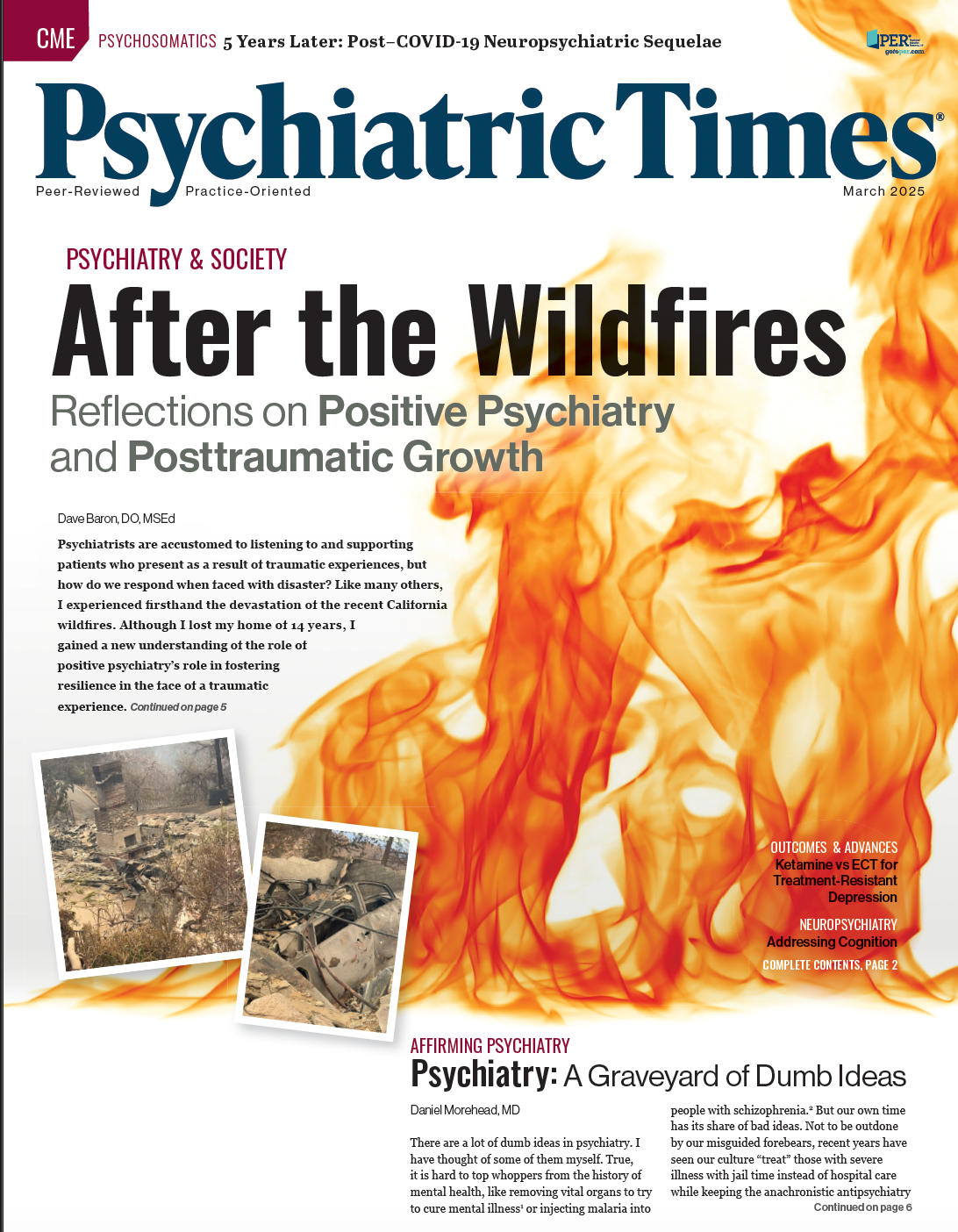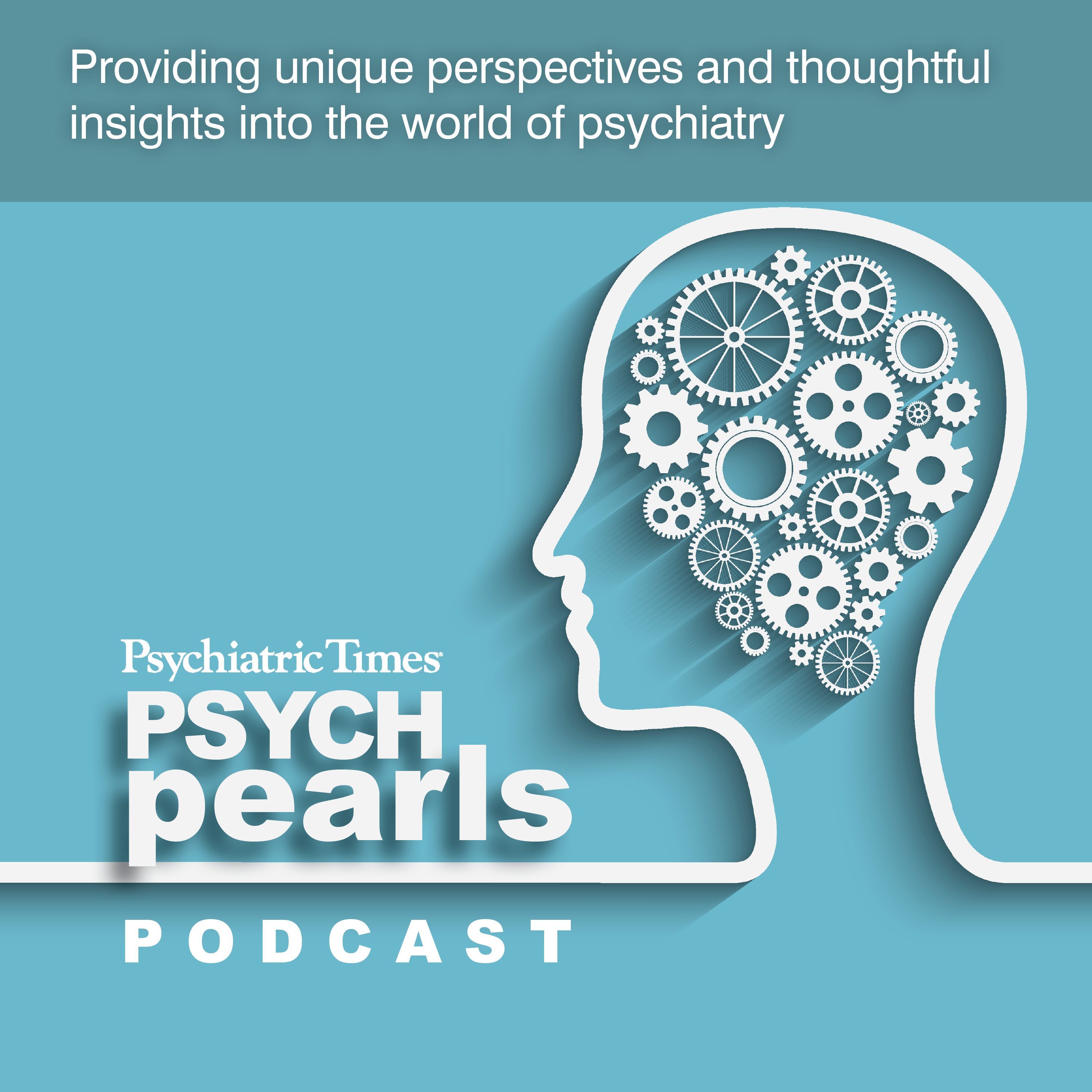SPECIAL REPORT: COGNITION
Nicotine use is the top preventable cause of early mortality in schizophrenia, leading to a 20-year decreased life expectancy compared with the general population.1,2 This is because the prevalence of tobacco use in schizophrenia is over 60%—3 times that of the general population.3 However, the reason for the high prevalence of tobacco use in schizophrenia remains largely unknown.
There are several competing hypotheses for why individuals with schizophrenia use nicotine so heavily. One theory is related to overlapping neurobiological abnormalities in dopaminergic mesolimbic and mesocortical circuitry.4 An alternative theory is that individuals with schizophrenia use nicotine to self-medicate psychosis symptoms or cognitive deficits.
Also In This Special Report
Cognition Is Like Art—You Know It When You See It
Horacio A. Capote, MD
When the Fog Doesn’t Lift: Targeting Cognitive Dysfunction in Depression
Susannah Murphy, DPhil, MA, MSc
Emotion and Cognitive Control: An Essential Partnership for Adaptive Behavior
Rachel E. Brough, MA; Alyssa J. Asmar, MA; and Kimberly S. Chiew, PhD
Are There Sex Differences in Cognition and Does It Matter?
Caroline Gurvich, BA/BSc, DPsych; and Sharna Jamadar, PhD
A leading hypothesis is that nicotine use reduces cognitive deficits in individuals with schizophrenia. Schizophrenia is characterized by impairment across a broad range of cognitive domains.
Nicotine is known to have cognitive-enhancing effects. Importantly, when nicotine was administered to individuals with schizophrenia and to otherwise healthy individuals, those with schizophrenia experienced greater enhancement of their cognitive performance with nicotine.5 This suggests that individuals with schizophrenia experience more cognitive benefit from nicotine than individuals without the illness.
Because of nicotine’s cognitive-enhancing effects in schizophrenia at the α7 nicotinic receptor, many clinical trials explored the use of nicotine and α7 nicotinic agonists as a treatment for cognitive deficits in schizophrenia.6 However, these studies found that nicotine and α7 nicotinic agonists were not an effective cognitive enhancement therapy. These conflicting findings beg the question: what is the underlying neural mechanism of nicotine? Is it possible that, in addition to acting upon reward circuitry, nicotine also acts on schizophrenia-specific circuitry?
To answer this question, we used an entirely data-driven approach to identify neural correlates of nicotine use in schizophrenia.7 This approach is not confined by a predetermined hypothesis of what brain regions will be involved. Instead, a data-driven approach allows us to examine the entire brain and ask, “where is brain activity related to nicotine use?” Using this data-driven method, we observed that brain network organization was related to nicotine use, but only in schizophrenia. Specifically, only in individuals with schizophrenia, those who smoked more cigarettes per day showed a pathologic expansion of the default mode network (DMN) into a region typically occupied by a different network.
However, the question remained: Is nicotine acting on this network? If so, we should be able to measure the effects of nicotine on this network with an MRI scanner. In a follow-up study, nicotine and placebo patches were administered to participants with schizophrenia and otherwise healthy participants, and network connectivity was measured at each time point.7 Across all participants, we observed a dose-response relationship where a higher nicotine dose was associated with a greater reduction in network connectivity. We then investigated whether there were diagnostic differences. We saw that participants with schizophrenia had hyperconnectivity in the DMN at placebo administration that was normalized by nicotine administration. Meanwhile, nicotine administration did not affect this network in otherwise healthy participants at all.
These findings suggest that the DMN is heavily involved in nicotine use in schizophrenia but not in healthy individuals. Hyperconnectivity in the DMN is a well-known finding in schizophrenia.8 We also know that the DMN is involved in cognitive performance. Specifically, DMN activity needs to be suppressed for successful cognitive performance.
So, is it possible that nicotine is improving cognitive performance by normalizing DMN hyperconnectivity in schizophrenia? If so, how can we translate this knowledge into effective interventions for smoking cessation and cognitive enhancement? Repetitive transcranial magnetic stimulation (rTMS) is a form of noninvasive brain stimulation that uses electromagnetic fields to change patterns of neuronal activity. rTMS allows for focal modulation of brain networks, including the DMN. Instead of nicotine, can we use rTMS to reduce DMN hyperconnectivity and improve cognitive performance? In clinical trials, we are aiming to do just that (NCT06389266). If successful, rTMS applied to the DMN would be the first schizophrenia-specific treatment for nicotine dependence and may finally unlock the mystery of why individuals with schizophrenia suffer the fatal consequences of tobacco use.
Dr Ward is a psychiatrist, director of neuromodulation research, director of the Vanderbilt Psychiatry Residency Research Track, and an assistant professor of psychiatry and behavioral sciences at Vanderbilt University Medical Center in Nashville, Tennessee.
References
1. Laursen TM, Nordentoft M, Mortensen PB. Excess early mortality in schizophrenia. Annu Rev Clin Psychol. 2014;10:425-448.
2. Brown S, Inskip H, Barraclough B. Causes of the excess mortality of schizophrenia. Br J Psychiatry. 2000;177:212-217.
3. Chapman S, Ragg M, McGeechan K. Citation bias in reported smoking prevalence in people with schizophrenia. Aust N Z J Psychiatry. 2009;43(3):277-282.
4. Ward HB, Nemeroff CB, Carpenter L, et al. Substance use disorders in schizophrenia: prevalence, etiology, biomarkers, and treatment. Pers Med Psychiatry. 2023;39-40:100106.
5. Barr RS, Culhane MA, Jubelt LE, et al. The effects of transdermal nicotine on cognition in nonsmokers with schizophrenia and nonpsychiatric controls. Neuropsychopharmacology. 2008;33(3):480-490.
6. Tregellas JR, Wylie KP. Alpha7 nicotinic receptors as therapeutic targets in schizophrenia. Nicotine Tob Res. 2019;21(3):349-356.
7. Ward HB, Beermann A, Nawaz U, et al. Evidence for schizophrenia-specific pathophysiology of nicotine dependence. Front Psychiatry. 2022;13:804055.
8. Whitfield-Gabrieli S, Thermenos HW, Milanovic S, et al. Hyperactivity and hyperconnectivity of the default network in schizophrenia and in first-degree relatives of persons with schizophrenia. Proc Natl Acad Sci U S A. 2009;106(4):1279-1284.








